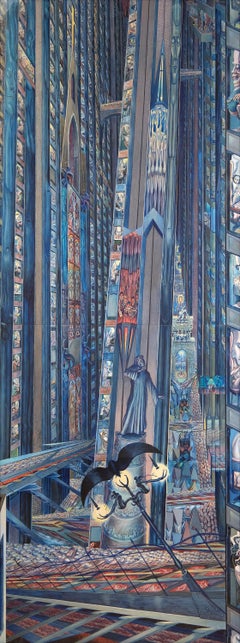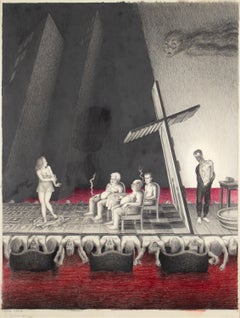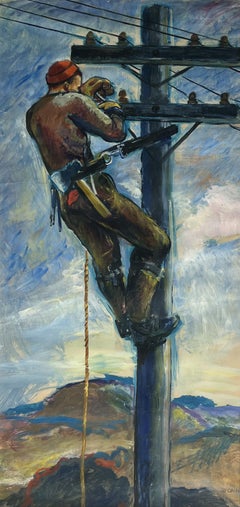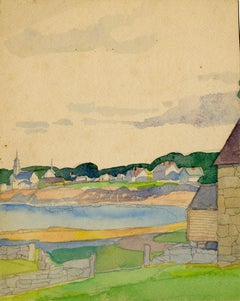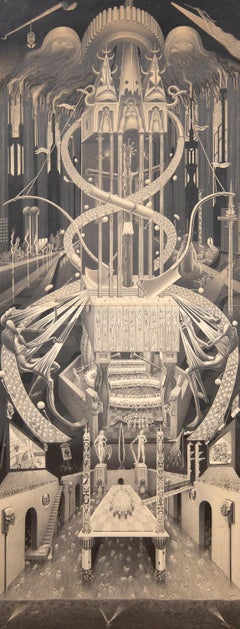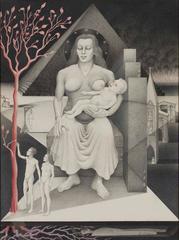Irving Norman Figurative Drawings and Watercolors
The Lithuanian-American artist Irving Norman was a social Surrealist who painted large-scale and highly detailed critiques of contemporary life with hopes that viewers would consider the consequences of their actions and change their behavior.
Influenced by the dire conditions of the Great Depression, Norman’s massive canvases feature armies of clone-like figures behaving in the clockwork manner in which they have been programmed. He moved from New York to Los Angeles in 1934 before helping to defend the Spanish Republic from the fascist Franco dictatorship.
Norman survived the Spanish Civil War and in 1939 settled on Catalina Island off the Southern California coast, where he began drawing and painting from the atrocities he had witnessed. In 1940, he moved to San Francisco and had a solo exhibition at the San Francisco Museum of Art two years later. Norman then traveled to Mexico City and saw the murals of Diego Rivera, José Clemente Orozco and David Alfaro Siqueiros before moving to New York City to study at the Art Students League from 1946 to 1947. He returned to San Francisco in the late 1940s. In 1988, fire destroyed Norman’s home, studio, artwork and personal papers.
Find original Irving Norman paintings and prints on 1stDibs.
(Biography provided by Heather James Fine Art)
Mid-20th Century Post-War Irving Norman Figurative Drawings and Watercolors
Watercolor
Mid-20th Century American Modern Irving Norman Figurative Drawings and Watercolors
Color Pencil, Pencil
1930s American Realist Irving Norman Figurative Drawings and Watercolors
Paper, Gouache
Early 1900s American Modern Irving Norman Figurative Drawings and Watercolors
Watercolor, Pencil
1950s American Modern Irving Norman Figurative Drawings and Watercolors
Paper, Chalk, Pencil, Color Pencil
1920s Post-Impressionist Irving Norman Figurative Drawings and Watercolors
Watercolor
Late 19th Century Old Masters Irving Norman Figurative Drawings and Watercolors
Watercolor
1920s Post-Impressionist Irving Norman Figurative Drawings and Watercolors
Watercolor
1920s American Modern Irving Norman Figurative Drawings and Watercolors
Paper, Watercolor, Pencil
Early 20th Century American Modern Irving Norman Figurative Drawings and Watercolors
Paper, Pencil, Color Pencil
1890s Impressionist Irving Norman Figurative Drawings and Watercolors
Watercolor
1930s Post-Impressionist Irving Norman Figurative Drawings and Watercolors
Watercolor
1930s American Modern Irving Norman Figurative Drawings and Watercolors
Paper, Watercolor, Pencil
1920s American Modern Irving Norman Figurative Drawings and Watercolors
Paper, Watercolor, Pencil
Mid-20th Century Post-War Irving Norman Figurative Drawings and Watercolors
Graphite
1940s Surrealist Irving Norman Figurative Drawings and Watercolors
Color Pencil, Graphite
